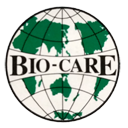Brief history of the discovery and development - K84 and later K1026
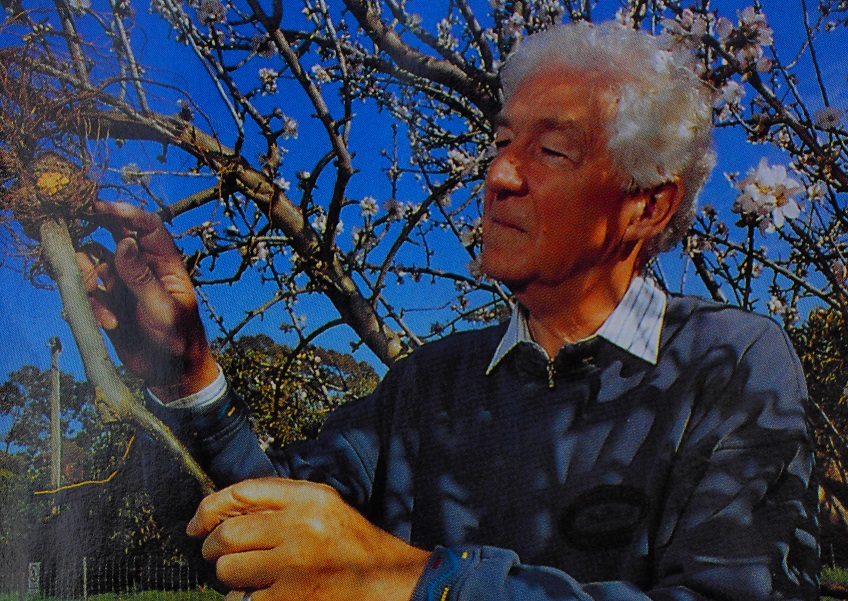
Emeritus Professor Allen Kerr inspecting gall on peach tree
The story of the discovery of a biological control agent against crown gall disease started in 1967 in Adelaide, SA, Australia. Dr Allen Kerr, plant pathologist, arrived in Australia to work on crown gall in stone fruit as it was identified as a major disease problem. In his laboratory at the Waite Agricultural Research Institute (part of the University of Adelaide, SA), a postgraduate student, Peter New, selected many non-pathogenic, biotype 2 isolates of Agrobacterium radiobacter (now known as Rhizobium rhizogenes) from soil around a crown gall-affected peach tree in a nursery near Adelaide. One isolate, known as strain K84 (the 84th strain in Allen Kerr’s collection) proved to be very effective at stopping infections by local pathogenic agrobacteria at an inoculation ratio of 1:1, this was later found to be due to its aggressive competition and colonisation of plant roots and wound sites, plus its in-situ production of specifically targeted antibiotics (bacteriocins) called agrocin 84 and 434. By 1973, K84 was being sold to local nurseries for control of crown gall agrobacteria attacking stone fruits, nut trees and roses. This was the first instance of the commercial use of a bacterium for the biological control of a plant pathogen in soil and it is the first commercial use of a bacterium to control any plant disease. Prior to 1973 many nurseries suffered heavy losses, sometimes over 50%, and around Sydney there were occasional bonfires to destroy rose propagation stock infected with crown gall.
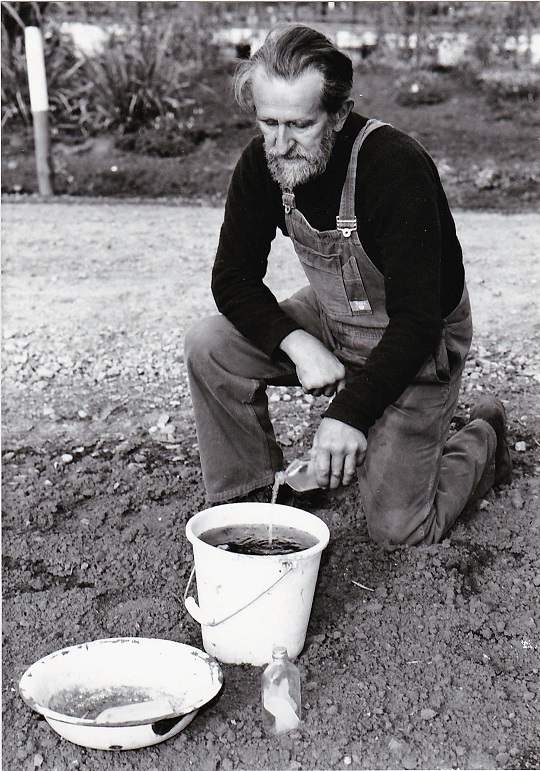
The Waite Agricultural Research Institute field manager washing bottle cultures of K84 into bucket of clean water for dipping plant stock.
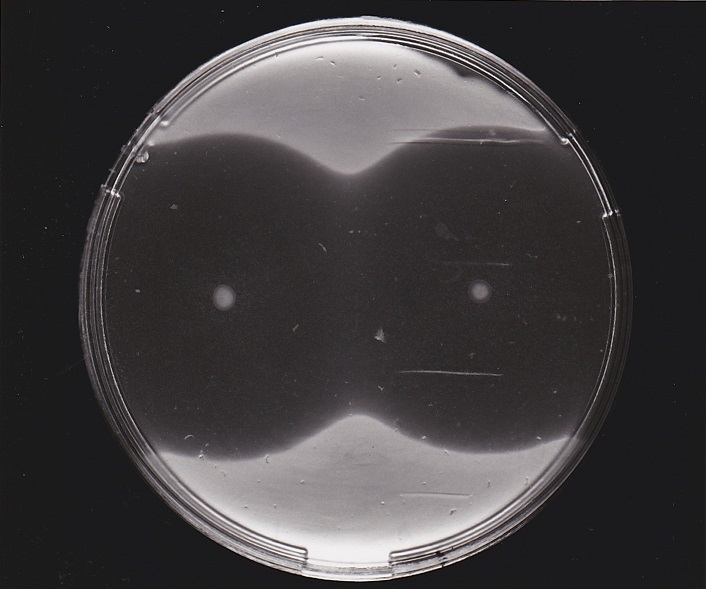
Bioassay for the production of agrocin 84 by K84 and K1026. Agrocin production is indicated by the zones of inhibition in the growth of the agrobacterial strain K198 overlay on Stonier's medium. (Jones et al 1988)
By 1975, two Australian companies became involved in the commercial production and sale of strain K84, one company marketing its K84 product as NOGALL. About this time, other groups around the world also requested a culture of K84 from Dr Kerr and these groups also found it very effective. So strain K84 was tested, and in some cases commercially sold, in countries including the USA, Russia, China, South Africa, most European countries, Israel, Japan, Nepal, New Zealand and South Korea.
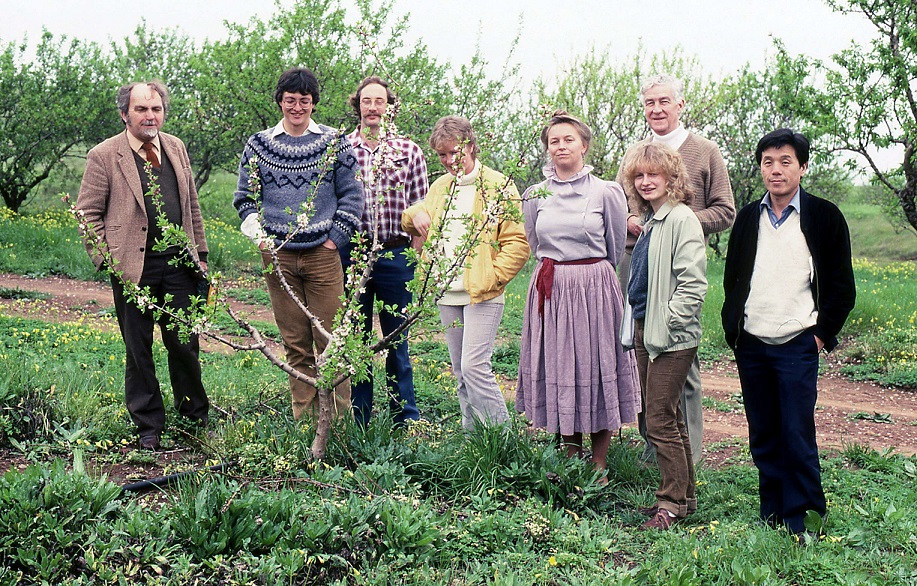
The Waite group of researchers inspecting first almond tree treated with K84
By the late 1970’s it became known that there were a few failures using strain K84 because some pathogenic agrobacteria had acquired the agrocin 84-producing plasmid (pAgK84) from strain K84, including the immunity genes located on this plasmid. Research began in a joint project involving Professor Stephen Farrand, of the University of Illinois, and Professor Allen Kerr with his postgraduate students, Jeff Ellis and J.-S. Shim, to investigate the genetic basis for this breakdown in control. Genes involved in the transfer of this plasmid to pathogenic agrobacteria were located and by 1987, with the assistance of a postdoctoral fellow, David Jones, using recombinant DNA techniques, a pAgK84 transfer deficient mutant was selected from 7,000 colonies tested; the new mutant was code named strain K1026. Strain K1026 contained a very small deletion (5.9kb) of a portion of the genes coding for the transfer of the agrocin 84 plasmid, thus making it impossible for its conjugal transfer and, hence, secured the long-term effective use of this unique biocontrol agent. With the permission from the Council of the University of Adelaide and the Federal Government Recombinant DNA Monitoring Committee, Professor Kerr performed a large scale outdoor in planta trial using almond seedlings in the grounds of the Waite Institute in June 1987. It was only the third recombinant DNA organism to be tested without containment facilities anywhere in the world. With this trial success, in 1988, the NSW Department of Agriculture approved strain K1026 for commercial use as a biopesticide, under the trade name NOGALL, from applications made to the Australian National Registration Authority by Bio-Care Technology Pty Ltd.
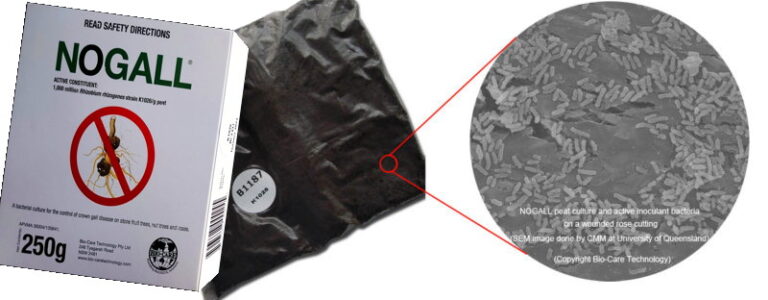
NOGALL packet and activated product on rose cutting
In 1990, Professor Kerr (AO, FRS, FAA), Professor Eugene Nester (USA) and Professor Jeff Schell (Germany) received the inaugural Australia Prize for Biological Sciences relating to agriculture or the environment for their work with crown gall and understanding the genetic processes involved in agrobacterial transformation of plant cells.
At a conservative but informed guess, biological control of crown gall has probably contributed $100,000,000 annually to the Australian economy largely through the protection of almond trees but also peach, nectarine, cherry trees, etc… and of other plants such as roses. Globally, the economic contribution of Professor Kerr’s work to control crown gall in targeted host crops would be significantly higher. Bio-Care is proud to be associated with this field of research and its commercial implementation and acknowledges the significant contributions by several Australian and overseas researchers involved in the discovery, development and testing of K84 and later K1026, including Emeritus Professor Allen Kerr, Professor Stephen Farrand, Drs Peter New, Maarten Ryder, Bruce Clare, David Jones, Max Tate, Peter Murphy, Nick McClure, Bill Roberts, Scott Donner, J.-S. Shim from South Korea, Jeff Ellis and Daw Khin Htay from Burma (now Myanmar).
Further reading see:
Kerr A. 2016. Biological Control of Crown Gall Aust Pl Path (45)1: 15-18
Jones D.A., Ryder M.H., Clare B.G., Farrand S.K., Kerr A. 1988. Construction of a Tra¯ deletion mutant of pAgK84 to safeguard the biological control of crown gall. Molecular and General Genetics 212: 207-214

